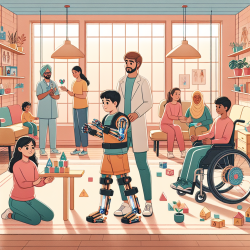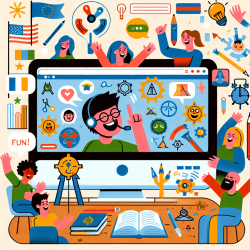Recent advancements in technology have opened up new possibilities for habilitation devices, especially for children with cerebral palsy (CP). A groundbreaking study titled Towards a multi-user experience approach to exploring key requirements to design smart habilitation devices for children with cerebral palsy offers valuable insights into how these devices can be designed to meet the needs of multiple stakeholders, including children, parents, occupational therapists, and technical experts.
Here, we delve into the key findings and practical recommendations from this research to help practitioners enhance their skills and create better outcomes for children with CP.
Understanding Multi-User Experience (UX) in Habilitation Devices
The study emphasizes the importance of a multi-user experience (UX) approach in designing smart habilitation devices. This means considering the needs and desires of all stakeholders involved, including:
- Children with CP
- Parents
- Occupational therapists
- Technical specialists
By involving these groups in the design process, the study aims to create devices that are not only functional but also enjoyable and easy to use.
Key Requirements for Designing Effective Habilitation Devices
The research identified eight critical requirements for designing smart habilitation devices:
- Co-Design with Stakeholders: Involve children, parents, occupational therapists, and technical experts in the design process to ensure the device meets everyone's needs.
- Motivation: Design devices that motivate children to use them, enhancing engagement and therapeutic outcomes.
- User-Centered Approach: Personalize and modularize devices to cater to individual needs and preferences.
- Device Characteristics: Ensure devices are durable, lightweight, and easy to use, and provide appropriate feedback mechanisms.
- Serious Games Integration: Incorporate serious games that are engaging, customizable, and aligned with therapeutic goals.
- Social Environment: Design devices that can be used in social settings like schools, promoting social inclusion and peer interaction.
- Motion Capture and Data Processing: Utilize sensors and algorithms that accurately capture and process subtle movements.
- Environmental Considerations: Design devices that are easy to set up and use in various environments, such as homes, clinics, and schools.
Practical Applications for Practitioners
Practitioners can leverage these insights to improve their practice in several ways:
- Collaborate with Stakeholders: Engage parents, children, and technical experts in the design and selection of habilitation devices.
- Personalize Therapy: Use modular and customizable devices to meet the unique needs of each child.
- Integrate Technology: Incorporate serious games and other engaging technologies into therapy sessions to enhance motivation and outcomes.
- Monitor Progress: Utilize devices with advanced motion capture and data processing capabilities to track and analyze children's progress over time.
Encouraging Further Research
While this study provides a solid foundation, further research is needed to refine these requirements and develop new devices. Practitioners are encouraged to stay informed about the latest advancements and participate in research initiatives to continue improving outcomes for children with CP.
To read the original research paper, please follow this link: Towards a multi-user experience approach to exploring key requirements to design smart habilitation devices for children with cerebral palsy.










